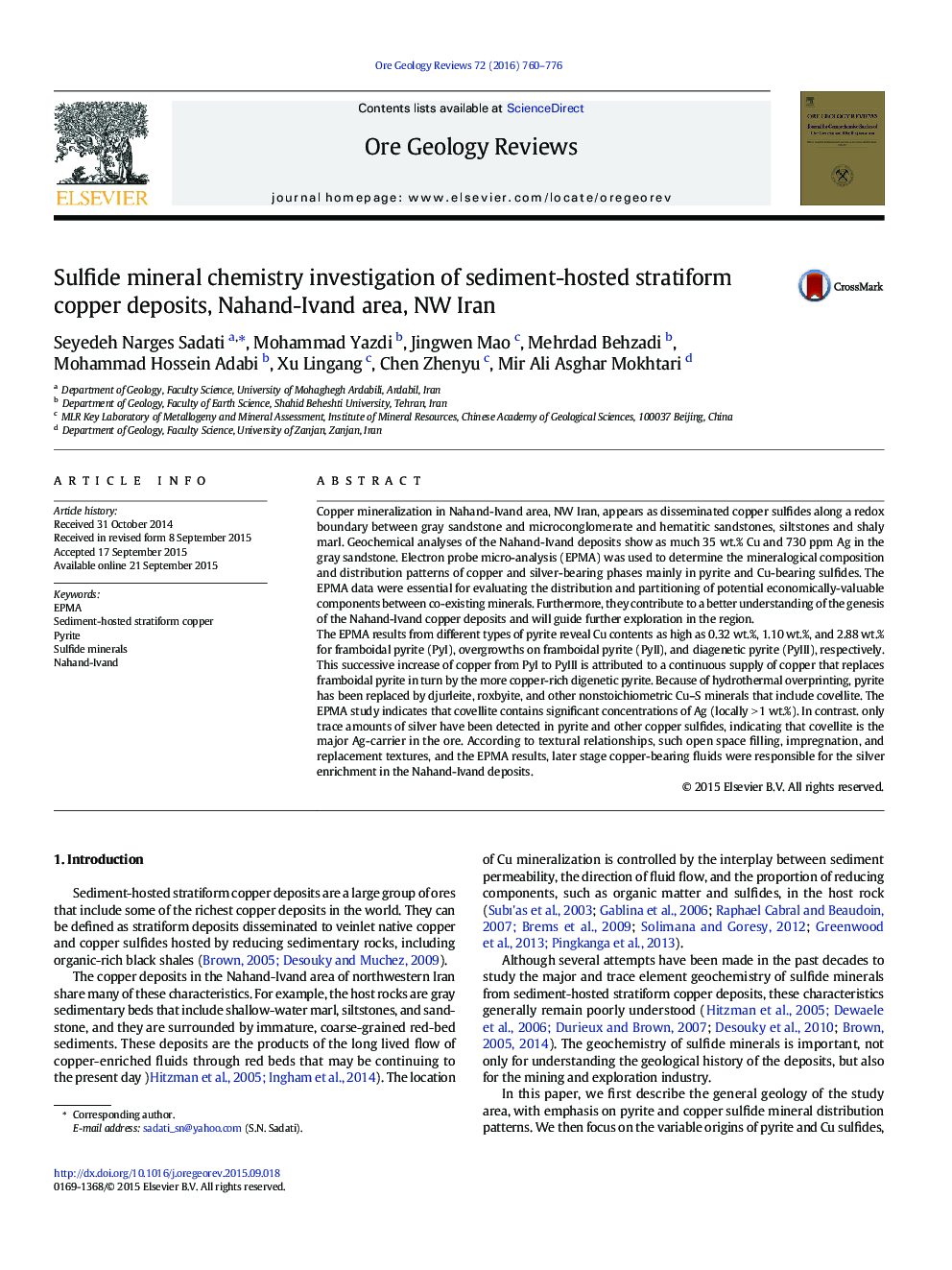| Article ID | Journal | Published Year | Pages | File Type |
|---|---|---|---|---|
| 6435797 | Ore Geology Reviews | 2016 | 17 Pages |
â¢Copper deposits in the Nahand-Ivand area are hosted by gray sandstone.â¢Detailed EPMA indicates that the syn-sedimentary to early-diagenetic framboidal pyrite (PyI) has low values of Cu, Pb and Ag. Successive generations of pyrite (Py II and Py III) formed as a consequence of overgrowths and diagenetic processes.â¢Geochemical studies indicate that the Nahand-Ivand deposits are rich in copper and silver, reaching up to 35 wt.% and 730 ppm, respectively. The EPMA studies show that two-phase covellite-yarrowite associations are most widespread and, where mixtures of Cu-sulfides coexist, Ag is preferentially partitioned into covellite over co-existing digenite.â¢Several features, including framboidal pyrite and cuprian pyrite, the nonequilibrium assemblage of pyrite and Cu-rich sulfide, basket-weave intergrowth texture of chalcopyrite and bornite, the presence of roxbyite, replacement and open space filling texture, and concentration of copper mineralization associated with organic matter, suggest that the Nahand-Ivand deposits are low-temperature sediment-hosted stratiform copper deposits.
Copper mineralization in Nahand-Ivand area, NW Iran, appears as disseminated copper sulfides along a redox boundary between gray sandstone and microconglomerate and hematitic sandstones, siltstones and shaly marl. Geochemical analyses of the Nahand-Ivand deposits show as much 35Â wt.% Cu and 730Â ppm Ag in the gray sandstone. Electron probe micro-analysis (EPMA) was used to determine the mineralogical composition and distribution patterns of copper and silver-bearing phases mainly in pyrite and Cu-bearing sulfides. The EPMA data were essential for evaluating the distribution and partitioning of potential economically-valuable components between co-existing minerals. Furthermore, they contribute to a better understanding of the genesis of the NahandÂIvand copper deposits and will guide further exploration in the region.The EPMA results from different types of pyrite reveal Cu contents as high as 0.32Â wt.%, 1.10Â wt.%, and 2.88Â wt.% for framboidal pyrite (PyI), overgrowths on framboidal pyrite (PyII), and diagenetic pyrite (PyIII), respectively. This successive increase of copper from PyI to PyIII is attributed to a continuous supply of copper that replaces framboidal pyrite in turn by the more copper-rich digenetic pyrite. Because of hydrothermal overprinting, pyrite has been replaced by djurleite, roxbyite, and other nonstoichiometric Cu-S minerals that include covellite. The EPMA study indicates that covellite contains significant concentrations of Ag (locally >Â 1Â wt.%). In contrast. only trace amounts of silver have been detected in pyrite and other copper sulfides, indicating that covellite is the major Ag-carrier in the ore. According to textural relationships, such open space filling, impregnation, and replacement textures, and the EPMA results, later stage copper-bearing fluids were responsible for the silver enrichment in the Nahand-Ivand deposits.
Graphical abstractDownload full-size image
